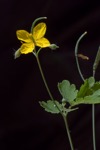Notice (8): Undefined index: geoplugin_countryCode [APP/Controller/AppController.php, line 94]Code Context$Country_code = '';if($ip_data && $ip_data['geoplugin_countryCode'] != null) {$Country_code = $ip_data['geoplugin_countryCode'];$client = null $forward = null $remote = '216.73.216.189' $ip = '216.73.216.189' $ch = unknown $ip_data_in = '{ "geoplugin_status":429, "geoplugin_message": "Blacklisted due to sending too many requests to geoplugin.net. Consider whitelisting your IP or domain", "geoplugin_url": "https://www.geoplugin.com/premium/" } ' $ip_data = [ 'geoplugin_status' => '429', 'geoplugin_message' => 'Blacklisted due to sending too many requests to geoplugin.net. Consider whitelisting your IP or domain', 'geoplugin_url' => 'https://www.geoplugin.com/premium/' ] $Country_code = ''App\Controller\AppController::initialize() - APP/Controller/AppController.php, line 94 App\Controller\ProductsController::initialize() - APP/Controller/ProductsController.php, line 31 Cake\Controller\Controller::__construct() - CORE/src/Controller/Controller.php, line 273 ReflectionClass::newInstance() - [internal], line ?? Cake\Http\ControllerFactory::create() - CORE/src/Http/ControllerFactory.php, line 47 Cake\Http\ActionDispatcher::dispatch() - CORE/src/Http/ActionDispatcher.php, line 91 Cake\Http\BaseApplication::__invoke() - CORE/src/Http/BaseApplication.php, line 235 Cake\Http\Runner::__invoke() - CORE/src/Http/Runner.php, line 65 Cake\Http\Runner::__invoke() - CORE/src/Http/Runner.php, line 65 Cake\Http\Middleware\CsrfProtectionMiddleware::__invoke() - CORE/src/Http/Middleware/CsrfProtectionMiddleware.php, line 108 Cake\Http\Runner::__invoke() - CORE/src/Http/Runner.php, line 65 Cake\Http\Runner::run() - CORE/src/Http/Runner.php, line 51 Cake\Routing\Middleware\RoutingMiddleware::__invoke() - CORE/src/Routing/Middleware/RoutingMiddleware.php, line 168 Cake\Http\Runner::__invoke() - CORE/src/Http/Runner.php, line 65 Cake\Routing\Middleware\AssetMiddleware::__invoke() - CORE/src/Routing/Middleware/AssetMiddleware.php, line 88 Cake\Http\Runner::__invoke() - CORE/src/Http/Runner.php, line 65 Cake\Error\Middleware\ErrorHandlerMiddleware::__invoke() - CORE/src/Error/Middleware/ErrorHandlerMiddleware.php, line 96
| Scientific: | Chelidonium majus |
|---|---|
| Other: | Greater Celandine |
| Family: | Papaveraceae |
Greater celandine is a common weed in North America and Europe. It belongs to the poppy family (Papaveraceae) and like its cousin the opium poppy, it contains latex rich in alkaloids that have some weak analgesic, antispasmodic and sedative effects. Unlike opioids, it does not produce euphoric effects and is not addictive. Greater celandine is primarily used for cramping and spasmodic pain in the digestive tract like biliary colic. Animal trials show it reduces acetylcholine (ACh)-induced contraction in intestinal smooth muscle.
Early herbalists believed the " yellow milky sap " was a sign the herb was useful for liver conditions. Research supports that some of its alkaloids appear to have a choleretic effect aiding in the production of bile in the liver. Although greater celandine is used to treat liver conditions, its alkaloids are slightly caustic, and ironically there are several case reports of it causing drug-induced hepatitis. Therefore, with so many safer liver herbs to choose from, greater celandine should be reserved for only those patients with severe cramping conditions like biliary colic and irritable bowel syndrome (IBS-P) associated with cramping.
Isoquinoline alkaloids ( coptisine, chelidonine, sanguinarine, and berberine) are abundant in the yellow sap. These alkaloids also have significant antimicrobial actions that support their traditional use to treat infections. Applied topically, the yellow resin is a useful treatment for warts.
Similar constituents and actions to Hydrastis canadensis and Sanguinaria canadensis; primarily used for spastic digestive discomfort e.g. gallbladder spasms and promote flow of digestive juices (e.g. bile)
Hepatobiliary
• biliary insufficiency
• biliary dyskinesia
• biliary colic (gallbladder spasm)
• cholestasis
• cholelithiasis (gallstones)
• jaundice
Gastrointestinal
• atonic digestive complaints
• dyspepsia
• hypochlorhydria
• pancreatic insufficiency
• colic
• irritable bowel syndrome (IBS)
Dermatologic
• dyscratic conditions caused by 'bad blood'
• hives
• eczema
• psoriasis
• acne
• corns
Infection (topical application)
• warts
• verruca
• condyloma
• HPV
• fungal infections
• herpes simplex (HSV )
• Antispasmodic
• Analgesic
• Bitter
• Stomachic
• Hepatic
• Cholagogue
• Choleretic
• Expectorant
• Escharotic
• Antimicrobial
• Alterative
• Antiinflammatory
• Laxative (Mild)
• Emmenagogue
• Isoquinoline Alkaloids (E.g. Chelidonine, Berberine)
• Flavonolignans
• Tincture (1:10 in 45% EtOH): 1-2 ml tid
• Infusion (herb): 2 tsp tid
• Decoction (dried root): 1 tsp tid
Contraindications: Pregnancy and lactation (uterine stimulant); berberine is considered teratogenic.
Long-term use: Hepatotoxicity; monitor liver function.
Drug-induced hepatitis: Reported cases (due to isoquinoline alkaloid exposure).
Liver toxicity: Sanguinarine is hepatoxic.
Barnes J, Anderson LA, Phillipson JD. Herbal Medicines, 3rd ed. London: Pharmaceutical Press, 2007.
Bone K. Principles and Practice of Phytotherapy. Edinburgh: Churchill Livingstone, 2000.
Bone K. A Clinical Guide to Blending Liquid Herbs: Herbal Formulations for the Individual Patient. St Louis, MO: Churchill Livingstone, 2003.
Brinker F. The Toxicology of Botanical Medicines, 3rd ed. Sandy, Oregon: Eclectic Medical Publications, 2000.
Felter HW, Lloyd JU. King's American Dispensatory. 1898. http://www.ibiblio.org/herbmed/eclectic/kings/main.html. Accessed: August 19, 2006.
Hoffman D. Medical Herbalism. Rochester, Vermont: Healing Arts Press, 2003.
Weiss RF. Herbal Medicine. Beaconsfield, England: Beaconsfield Publishers Ltd, 1988.
Williamson EM, ed. Major Herbs of Ayurveda. Edinburgh: Churchill Livingstone, 2002
Disclaimer: This content is subject to change. The information is intended to inform and educate; it does not replace the medical evaluation, advice, diagnosis or treatment by a healthcare professional. www.nhpassist.com © 2014 NDAssist Inc. and/or its affiliates. All rights reserved.

|
Chelidonium (Greater Celandine )
SummaryGreater celandine is a common weed in North America and Europe. It belongs to the poppy family (Papaveraceae) and like its cousin the opium poppy, it contains latex rich in alkaloids that have some weak analgesic, antispasmodic and sedative effects. Unlike opioids, it does not produce euphoric effects and is not addictive. Greater celandine is primarily used for cramping and spasmodic pain in the digestive tract like biliary colic. Animal trials show it reduces acetylcholine (ACh)-induced contraction in intestinal smooth muscle. IndicationsSign in requiredActionsSign in requiredConstituentsSign in requiredPosologySign in requiredSafetySign in requiredReferencesSign in required |
|---|